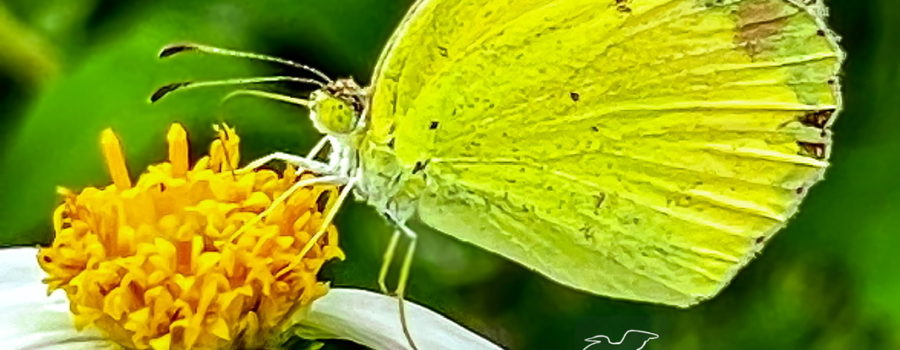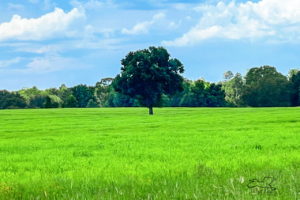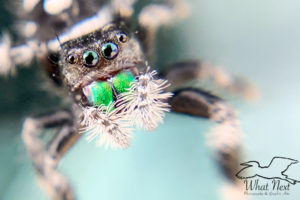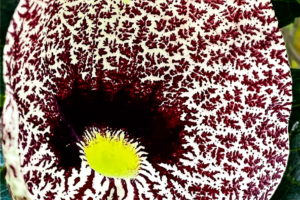The Little Yellow is an Incredible, Colorful Southern Butterfly

Summer in north central Florida is well known for being hot and humid, and this summer has been no exception. Many people find the weather this time of year quite oppressive, but most of our native wildlife is well adapted to this climate. I will admit that I don’t frequently go outside in the hottest part of the day this time of the year, but when I do, it’s usually very productive. I took a walk in the woods last weekend a little before 1 pm and got to photograph several new species. One of those was the little yellow butterfly (Eurema lisa), also known as the little sulphur. It’s a very common butterfly in this region, and I’ve seen it loads of time, but I had never gotten any good photos before. It tends to be an erratic flyer that is very cautious of large things like people approaching. I was able to photograph these by sitting quietly near a flower that several of these guys were coming to and waiting for them. It actually wasn’t a terribly long wait once the camera was focused and everything was quiet.

The little yellow has a range that extends from northern Central America through much of the southern United States. During the hottest parts of the year some of them even migrate as far north as Maine and Michigan. In those northern areas they will usually produce between one and three generations, while down here they can be found on the wing most of the year and can produce seven or more generations. The males and females look very similar and show little to no sexual dimorphism. Adult little yellows usually feed on the nectar from members of the aster family such as, tickseeds and hyssopleaf boneset. The flower in all of these images is an early blooming blackjack flower. The larvae feed almost exclusively on members of the pea family, specifically partridge pea (Cassia fasciculata) or sensitive partridge pea (Cassia nicitans).

Little yellows are usually found in open fields, woods clearings, woods edges, roadsides, and other disturbed or sunny areas. During the heat of the day, on the brightest days, males can often be found patrolling those areas searching for females to mate with. After mating, the females will lay a single egg along the central vein under one of the host plant’s leaves. The larva that hatches out is a yellowish green with a white line running down the center of it’s back. Later, the pupa is also a yellowish green, turning to brown to match the plant stems where it hangs. The adult that hatches out usually has a life span of 10-14 days.

As you can see, these gorgeous little butterflies, love our hot humid weather, and thrive in sun. Although you can find them at other times of the day, these guys are most active when the sun is out and hot. Getting a good chance to take some pictures of them made a little but of sweat on an early afternoon walk well worthwhile.






Recent Comments